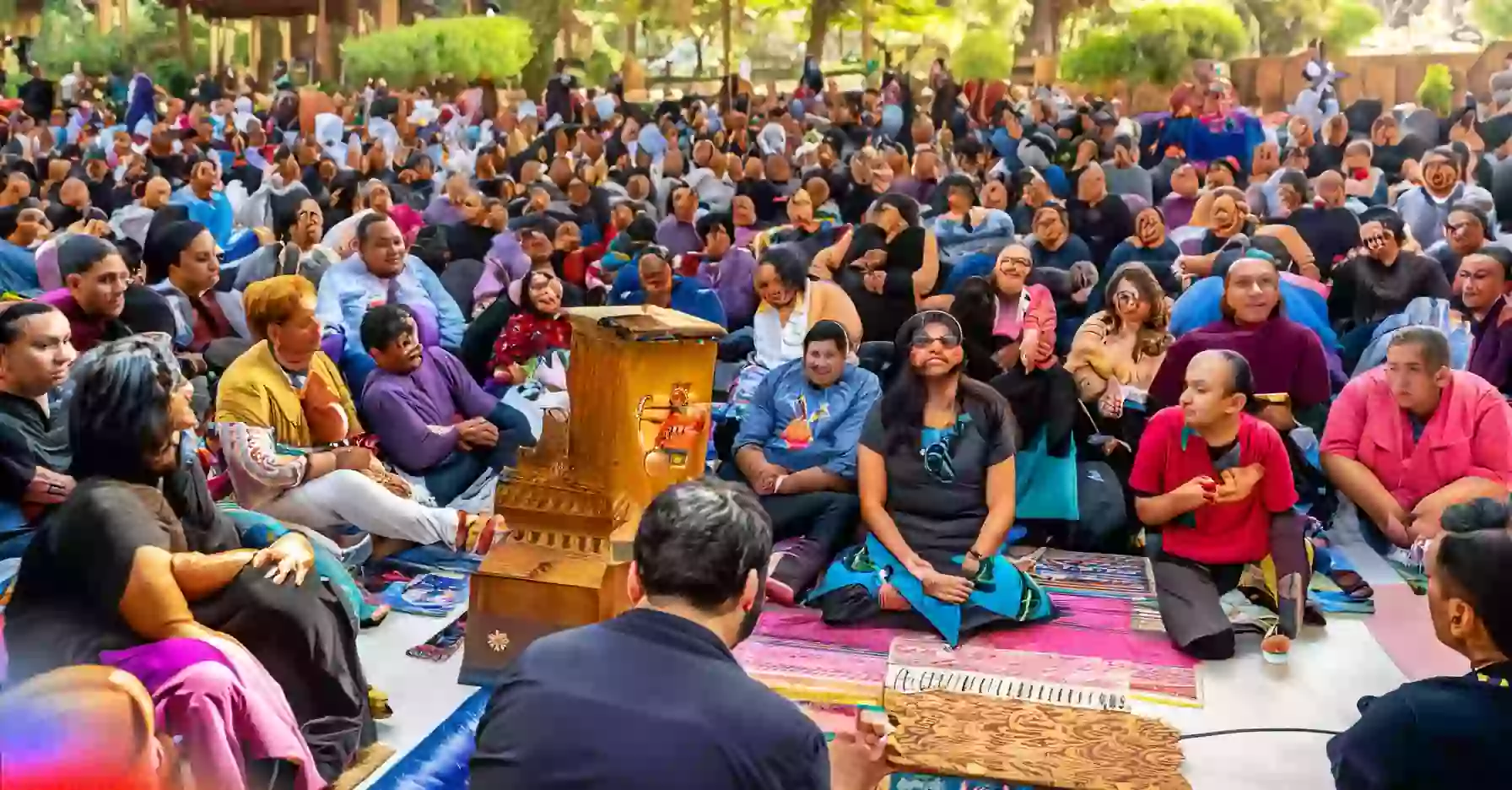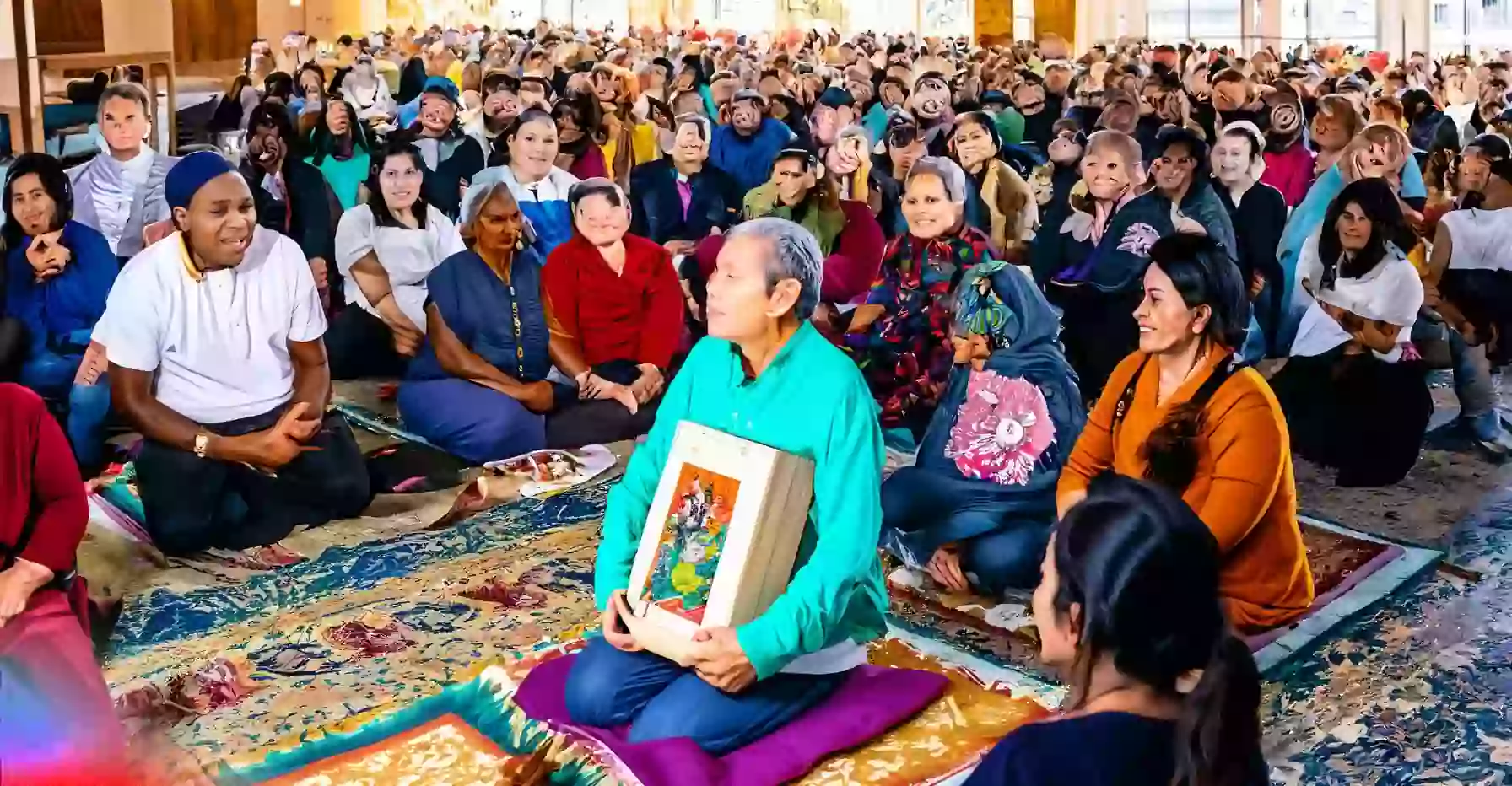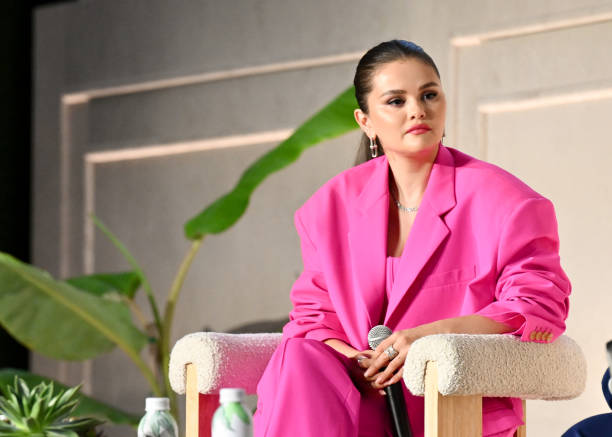What are some traditional forms of storytelling in India? India is a land of diverse cultures and traditions, and storytelling has been an integral part of its rich heritage for centuries. Before the advent of television, the internet, and smartphones, people would gather together to listen to stories about their history, folklore, and current events. Storytelling in India takes various forms and mediums, with each state and district having its own unique style influenced by the region’s distinctive cultural heritage.
Here are 10 traditional forms of storytelling in India:
- Katha: This is a form of religious storytelling in Hinduism that is performed as a ritual event.
- Epics and Puranas: These are ancient stories of wisdom told in Sanskrit and other local languages.
- Phad-bachanas: This is a storytelling tradition from Rajasthan that uses painted scrolls to narrate stories.
- Vikram-Betaal and Akbar-Birbal: These are popular stories about kings, queens, animals, and ghosts that have been passed down through generations.
- Puppets: Puppetry is a popular form of storytelling in India that uses intricate puppets to tell stories.
- Dance and Music: Storytelling in India often incorporates dance and music to enhance the narrative.
- Paintings: Some traditional storytelling forms in India use paintings to tell stories, such as the Warli paintings of Maharashtra.
- Folktales: India has a rich tradition of folktales that have been passed down through generations.
- Jataka Tales: These are stories about the previous lives of the Buddha that teach moral lessons.
- Ramayana and Mahabharata: These are two of the most famous epics in India that tell the stories of Rama and Krishna, respectively.
Please note that this is not an exhaustive list and there are many other traditional forms of storytelling in India.
Traditional Storytelling Forms in India
Some examples of traditional storytelling forms in India include epic poetry, folk tales, ballads, mythological stories, puppet shows, and religious parables. Ancient Indian epics like the Mahabharata and Ramayana are among the longest poetic works in the world and have been popular storytelling traditions in India for millennia.
Folk tales told through dance, music, and oral narration are part of community traditions in rural parts of India. Storytelling is also used for religious instruction and moral education through parables and legends based on gods and saints.
Evolution of Storytelling Traditions Across India
India is culturally diverse with distinct regional identities. Storytelling traditions have evolved differently in the various regions. In north India, Sufi poets contributed mystical poetry and qissa storytelling traditions. The Puppetry traditions of Rajasthan use narrative songs and humor along with colorful puppets for storytelling.
Ancient Sanskrit plays and dramatic storytelling are continued in parts of south India. Tribal communities in central and eastern India have evolved their own storytelling styles using local dance and music. The famous Kathputli puppet shows of Rajasthan combine folk stories with intricate puppet craft.
Preserving Cultural Heritage Through Storytelling
Folk tales, ballads, oral legends and mythological stories have been crucial means of passing down cultural knowledge and identity in the Indian subcontinent. Storytelling keeps alive ancient narratives like the Panchatantra and Jataka tales which impart moral wisdom. Oral traditions link modern Indians to their history and roots.
Regional folk tales communicate local values, customs, and traditions. Religious stories about gods and revered figures uphold spiritual and ethical worldviews integral to Indian culture. Stories of saint poets spread messages of love, wisdom, and humanity.
Storytelling Traditions Linked to Religious Events
In India, religious festivals and events have rich storytelling traditions associated with them. During Navaratri, Ramleela enactments celebrate Lord Rama through dance and drama. Sikh Gurdwaras often have storytelling sessions based on legends of gurus and saints.
Janmashtami, the birthday of Lord Krishna, is marked by devotees singing and sharing stories of Krishna Leela. The ancient tradition of Harikatha involves narrating Hindu scriptures with commentary. Islamic storytelling traditions include qawwali songs and dastangoi which tell stories of religious figures through poetry and music.
Diversity of Storytelling Across Indian States
Every state in India has its own distinct forms of storytelling which showcase regional history, folklore, and local flavors. Rajasthan is renowned for its puppet shows, bhopas, and ballad singers. The Harikatha kalakshepam tradition flourishes in Tamil Nadu.
Yakshagana folk theater with colorful costumes and makeup is found in Karnataka. Assam has storytelling traditions like Ojapali music combined with dance.
Maharashtra has Lavani song and dance stories. Goa has historic Konkani storytelling traditions for entertainment and education. Most Indian states have vibrant rural storytelling cultures.
Famous Indian Folktales
Some of the most famous folk tales of India include stories like Panchatantra, Jataka Tales, Hitopadesha, Vikram-Betal stories, Akbar-Birbal stories, and folk tales featuring characters like Tenali Raman. These stories often have anthropomorphic animal characters and follow a frame story format containing multiple sub-stories conveying moral lessons.
They have been passed down for generations through oral storytelling traditions. Other famous Indian folk tales include legends of superheroes like Raja Rasalu, historic tales of kingdoms and battles, and community tales about culture, identity and social life.
Indian Storytelling Traditions vs Other Countries
Indian storytelling is distinctive for its intricate blending of music, dance, poetry, spirituality, and morality. Styles like Harikatha and Kathakali incorporate costumes and gestures. Indian storytelling integrates mythological themes and incorporates lessons for children. There is a rich tradition of interactive narration with audience participation.
In contrast, western fairytales emphasize fantasy. African folktales incorporate animals and nature. Middle Eastern traditions like 1001 Nights focus on adventure. Indian storytelling combines imagination, ethics, and philosophical depth in a unique manner.
Props and Instruments Used
Traditional Indian storytelling uses various props and instruments to enhance the experience. Kathputli puppet shows of Rajasthan deploy intricate string puppets. Chitrakathi scroll paintings visually depict folk tales. Many storytellers use items like veena, cymbals, dholak drums for sound effects.
Harikatha storysingers in south India use painted wooden plates depicting characters and scenes. Shadow puppets made of leather are also used in parts of India. Folk storytellers often wear colorful costumes, headgears with beads, and special makeup to bring characters to life.
Music and Dance in Storytelling
Music and dance are integral to traditional Indian storytelling. Art forms like Kathakali from Kerala, Odissi from Odisha, and Chhau dance from eastern India incorporate stories from mythology and folklore through elaborately costumed dance and acting.
Yakshagana theater performances use songs and dance to narrate epic stories. Chitrakathi scroll paintings are accompanied by ballads explaining the visuals.
Various musical instruments like flutes, cymbals and drums are used for sound effects and emphasis in the storytelling. Rhythmic movements, martial arts and acrobatics are also used by some storytellers.
Storytelling Festivals and Events
Major festivals and fairs in India dedicated to the art of storytelling include the Kathputli Puppet Theatre Festival in Rajasthan, the Mahabharat Festival in New Delhi, the Dastangoi Storytelling Festival in various cities, and the Sharjah International Storytelling Festival.
In addition, many religious festivals incorporate storytelling traditions like Ramleela during Navratri, Harikatha at Janmashtami celebrations etc.
Annual gatherings like Kala Ghoda Arts Festival, and Jaipur Literature Festival also host storytelling performances. These events provide platforms for both established and upcoming storytellers.
Audience Engagement Techniques
Indian storytellers have mastered audience engagement using various techniques: interrupting narration with suspense, asking rhetorical questions, making eye contact, using humor, invoking audience reactions, encouraging chants or songs, involving participation through repeating dialogues, directly addressing members of the audience as characters, and tweaking the pace/tone flexibly based on feedback.
Many traditions like Villu Pattu puppet shows even allow the audience to influence the direction of the developing storyline through their engagement.
Common Themes in Indian Stories
Gods, demons, magical beings, talking animals, brave rulers, clever thieves, and common folk are popular characters. Triumph of good over evil, wisdom overcoming greed, acts of devotion and sacrifice, blessings rewarding kindness, and cunning defeating power are recurring themes.
Social issues like caste and gender discrimination are addressed through subtle messaging. Moral lessons on ethics, family values, friendship and righteousness are commonly conveyed through stories. Themes are derived from mythologies, folklore, community values, social problems and history.
Impact of Technology on Storytelling
Traditional live storytelling forms are adapting to utilize modern technology. Tools like microphones, speakers, stage lighting, projectors, cameras help broaden the reach and impact. Digital platforms like YouTube, Facebook Live are being used to broadcast performances and reach online audiences.
Smartphone apps are being created to preserve and share traditional stories. While technology has disrupted some conversational community traditions, it has also provided more exposure. But core elements like audience interaction remain integral to Indian storytelling.
Storytelling Traditions of Specific Castes or Communities
Various caste communities in India have their own distinct storytelling traditions. The Lohars of the Dalit community have their stories of chain-maker character Sant Ramdas. Muslim Dastangos tell tales of Amir Hamza through Urdu story-poems.
Tribal Gond storytellers of Central India recount myths and legends of nature gods through songs. Thol-pavan storytellers belonging to phases of ancient Tamil history narrate stories in village temples. The Lambani gypsy clan has a tradition of women storytellers who pass on their community’s history and cultural identity through songs.
Oral vs Written Story Traditions
While written literature has relatively recent origins, India has an ancient and rich heritage of oral storytelling traditions that shaped its ethos. Oral traditions have allowed greater flexibility, improvisation and interactive narration.
Written texts have enabled preservation and standardization. Both coexist with oral traditions continuing their vibrant rural and community presence through direct face-to-face narration that captures local essence and audience engagement. Indian oral traditions have also influenced written literature.
Challenges for Traditional Storytellers
Traditional storytelling in India faces challenges like declining patronage from royalty and wealthy communities. Lack of formal training institutions threatens specialized skills and knowledge transfer to younger generations. Popular entertainment from TV serials, films, malls have created changing tastes.
Rural-urban migration also disrupts community traditions. However, Indian storytelling has retained its significance through adaptation and community efforts. Government and NGO initiatives, festivals and digital adoption are helping storytelling forms sustain themselves.
Role of Storytelling in Education
Storytelling plays an important educational role in India. Creative narratives and riddles engage children and impart wisdom. Stories illustrate ethical values like truth, honesty and kindness through examples. Tribal storytelling teaches children about local culture, customs, and survival skills. Panchatantra animal fables develop astuteness.
Mythological tales teach ideals to live by. Stories of saints and reformers inspire life purpose. Storytelling enables contextual, accessible learning and helps children develop listening, communication, vocabulary, imagination and critical thinking abilities. It promotes cultural roots and human bonding.
Regional Storytelling Techniques
Every region in India has developed distinct storytelling techniques based on its history and ethnography. In north India, styles like sufi poetry, gurbani, and qissa narration developed. In south India, traditions like villu pattu with string puppets, harikatha singing with bells and cymbals using unique tunes emerged. Kathputli puppet shows incorporate Rajasthani folk music.
The Northeast has zelianglen narrative poems and puppetry forms like putola nach. Chhau masks and martial movements are used in eastern India storytelling. Distinct regional languages, costumes, musical instruments, and dramatization styles characterize techniques.
Incorporating Moral Lessons
Indian storytellers traditionally embed moral lessons within the narrative in creative, relatable ways. Animal fables use anthropomorphic qualities to teach wisdom and ethics. Fables like the hare and tortoise impart values like hard work and perseverance. Myths demonstrate devotion through characters like Prahlad.
Tales of Katha Saritsagara illustrate virtues and vices subtly through layered plots. Stories conveying duties, discipline, courage, sacrifice, honesty, and karma enable indirect life learning. These moral themes reflect Indian thought from Vedic philosophy to Buddhism. Storytelling allows articulation of complex truths via accessible examples.
Famous Indian Storytellers Through History
India has a long history of gifted storytellers who helped shape culture. The author of epics like Ramayana and Mahabharata, Maharishi Valmiki, is considered the Adi Kavi. Chandravati, an eighth century poet and scholar, composed tales of valor and virtues. Sixteenth century Bhakti poet Tulsidas retold the Ramayana in Awadhi language.
Modern stalwarts include C.V. Raman Pillai who revived Kathakali dance stories and Guru Gulab Devi who led the revival of the Khyal dance traditions of Rajasthan. Eminent Urdu poet Gopi Chand Narang has promoted dastangoi storytelling. Other notable storytellers cover various Indian languages and regional traditions.
Storytelling and Community Building
Storytelling plays a vital community-building role in India. Gathering to listen to a storyteller has traditionally been an engaging communal activity in villages. Stories communicate shared identity, values, and experiences. Narratives provide common ground for people to bond.
Folk tales and religious stories unite people across generations through a sense of continuity. Story-based festivals and rituals also bring people together. As an interactive form of entertainment, storytelling fosters camaraderie and expands one’s circle of trust and care. It helps develop community cohesion and harmony.
Storytelling Traditions Linked to Languages
India’s languages have helped shape distinct storytelling styles and repertoire. The ancient Sanskrit epics form core narratives in most traditions. Regional languages have given rise to different folk tales, poetry styles, musical forms and performance techniques.
For example, Avadhi and Hindi dialects enabled works like Tulsidas’ Ramcharitmanas. The Urdu language inspired dastans and dastangoi. Konkani storytelling used coastal, rural tales of life, gods and nature.
Bengali narratives draw from Shaktism and syncretic traditions. Indian tribal languages have sustained indigenous myths, creation stories and magical realism through storytelling customs.
Adaptation for Different Age Groups
Skilled Indian storytellers excel at adapting their content and style for listeners of different age groups. For toddlers and younger children, stories use more song, simple plots, repetition, animals and play. Story length is short with engaging sensory elements.
For older children, complex conflict-driven plots, riddles, and morals are incorporated. Mystical and romantic tales appeal to adolescents. Adults and elders enjoy philosophical tales, sharp wit, regional humor, satire on social issues, historical narratives etc.
The narrator’s voice modulation, dialogue emphasis, and participation requests also vary. This adaptive ability makes storytelling meaningful across ages.
Storytelling Forms for Children
There are many Indian storytelling traditions specially meant for children. Panchatantra animal fables teach wisdom in kid-friendly ways. Jataka tales of Buddha’s past lives have tales of virtue. Folk tales feature pranksters like Tenali Raman that children enjoy.
Event narrations like Sri Krishna Janmashtami involve play-acting, dances, and games. Styles like Villu Pattu with movable stick puppets provide interactive physical engagement.
Children also learn by participating in group recitals and re-enactments of stories. Lively vocal delivery, gestures, humor, repetition, and plot pacing tailored for children characterize these narrative styles.
Use of Humor in Storytelling
Humor is integral to traditional Indian storytelling as a tool to engage audiences and communicate wisdom in an entertaining, non-didactic manner. Tricksters like Birbal and Tenali Raman show wit and cunning through funny folk tales. Irony and satire add humor while critiquing social issues. Wordplay, mimicry, jokes, and comic dialogues provoke laughter.
Exaggeration for effect elicits mirth. Bhojpuri folk songs make fun of domestic gender dynamics. Rajasthani khyal dance stories use costumes, mimicry and clown-like behaviors to tickle the funny bone. Comic elements allow storytelling to effortlessly convey messages.
Tribal Storytelling Traditions
India’s Adivasi communities have rich oral storytelling traditions that reflect indigenous culture. Gond tribal artists from Madhya Pradesh depict folktales with scroll paintings. Santhal mythologies of Jharkhand recount tales of nature spirits through songs.
Maharashtra’s Warli tribal art involves narrative wall paintings accompanying folk stories. Kerala’s Irula tribe has mythological legends linked to nature. Rajasthan’s Kathodi tribe stories feature dances accompanied by rhythm.
Chhattisgarh’s Panika tribe storytelling uses music and rhyme. Tribal languages sustain creative cultural expression through myths, metaphors, symbols, and morals that communicate ethnic pride and shared memories.
Visual Elements in Storytelling
Indian storytelling incorporates striking visual elements for narrative impact. Kathakali dancers from Kerala use elaborate costumes, face painting and hand gestures to dramatize stories. Chitrakathi scroll paintings from Maharashtra visually complement folk story narration.
Rajasthan’s kathputli puppet shows depict tales through intricately carved string puppets. Togalu Gombeyatta leather shadow puppetry from Karnataka enacts dramas behind screens. Odissi dance forms like Gotipua use masks to represent gods and mythical characters.
Folk and classical dance routines add visual appeal interpreting stories through symbols and expressions. Imaginative visualizations make stories more engaging and memorable.
Occupation-Specific Story Traditions
Some traditional storytelling forms in India are linked to particular occupations and crafts. Snake charmers from Kerala have mythological stories about snakes that they narrate. Yarn spinners from Bihar would sing and tell tales to make their work entertaining.
Folk songs like Lavani were traditionally sung by women while grinding grain or cooking. Fisherfolk stories in coastal regions involve the sea, ships and fantasy. Martial nomadic communities have tales of valor, battles and honor told through generations.
Folk dancers might recount mythological tales about the very gods and goddesses they enact. Thus, occupations shaped specific narrative content and their contexts.
Incorporating Music in Performances
In Indian storytelling, music plays an integral role in performances rather than just providing a background track. Styles like Harikatha from Andhra Pradesh use melodious songs sung in a classical raga format to narrate stories in a lyrical way.
The singers enhance impact by using bells and cymbals for effect. Villu Pattu puppeteers sing ballads explaining the visual story. Chhau dance has been called ‘storytelling through music’.
Yakshagana performers use background songs by a chorus to supplement the dialogue. Musical accompaniment creates appropriate moods and drama for storytelling. It elevates engagement and recall.
Storytelling Traditions of Different Religions
Each major religion in India has developed its own narrative styles and content for storytelling. Hindu traditions include Puranic legends, Upanishad parables, folk stories of gods. Buddhist Jataka tales impart values through Buddha’s past lives.
Islamic storytelling ranges from lyrical Sufi songs to adventures like Alif Laila. Sikh traditions include stories of gurus spreading spiritual messages. Jain storytelling covers moral themes from teachings like Acharanga Sutra.
Christianity inspired local forms like Margam Kali with dance, music and biblical stories. Zoroastrian traditions have allegorical tales explaining their cosmology. Various reform movements also pioneered new styles to communicate their philosophy.
Transferring Knowledge to Next Generations
India’s traditional storytellers adopt creative ways to impart their skills and knowledge to next generations. Methods like ustad-shagird foster learning through hands-on experience, repetition and practice under personal guidance.
Storytelling families pass down repertoire and techniques. Master puppeteers like Anupama Hoskere have established schools. Government-supported storytelling and folk arts academies train students in some states.
Young learners often start by playing minor roles and then graduate to lead roles. Limited literacy helps sharpen oral memorization and performance abilities. Adaptive digital media also aids preservation and dissemination today.
Foreign Influences on Indian Storytelling
While having strong indigenous roots, Indian storytelling has also incorporated foreign influences. The Jataka tales and Panchatantra fables spread to other Asian cultures and returned with embellishments.
Persian and Arabic fantasy tales enriched medieval storytelling forms. Victorian morality and English theater impacted techniques during colonial rule. Storytelling forms like Garinagu of Karnataka’s coastal communities show Afro-Caribbean influence.
Burmese and Chinese styles have penetrated Eastern Himalayan storytelling. Globalization brings new ideas and tools. But core Indian values and elements have persisted through assimilation. Adaptation to new environments and audiences continues the evolutionary tradition.
Adapting Stories to Cultural Contexts
Skilled Indian storytellers succeed in adapting stories across different cultural settings by astutely modifying elements to fit local preferences. Character names, geography, language, ethnicity, costumes, music, dance forms, beliefs, and imagery are tailored.
Narrator’s tone, jokes, riddles, analogies, metaphors, and teaching approaches adjust as per audience. Plot pacing, content depth/complexity is modified for context.
This cultural fluidity has helped storytelling forms withstand the test of time and travel, while preserving meaningful cores based on universal human values. Adaptability reflects the essence of India’s pluralistic ethos.
Regional Storytelling Traditions
Diverse regions of India have distinct storytelling traditions depicting local culture, dialects, attire, customs and history. Kashmir has gosha-e-dabir singers reciting folktales. Goa has vibrant konkani storytelling by xigmo performers.
Assam’s unique traditions include puppet plays like Putola Nach. Maharashtra has been home to performers like Shahir Sambhaji Bhagat known for tamasha folk arts.
Bengal has its own ancient narrative art forms like Patua singing tales with scroll paintings. Every region has nurtured distinctive folk and classical storytelling styles using regional languages, instruments, costumes, theatrical forms, and source material.
Use of Gestures and Expressions
Indian storytelling integrates gestures and expressions to communicate with audiences. Traditions like Kathakali, Chhau, Theyyam and Yakshagana dances incorporate hand mudras with intricate meaning. Face movements convey emotions and personality. Eye contact and movements establish engagement.
Body postures like Odissi’s chauka stance add dramatic flair. Stylized movements like the swaying walk in Kathakali build anticipation. Pan-Indian elements like tilting the head sideways for questioning, or animated eyebrow motions for comedy appeal viscerally. The entire body becomes a theatrical canvas conveying the narrative.
Adaptation to Film and Theater
Many live Indian storytelling forms have been adapted to mediums like films and theater which expand their reach. Lavani performance stories have been adapted for Marathi stage and cinema. The Somnatha Mahakavya legend became a Gujarati play and movie.
Traditional puppet shows like Rajasthan’s kathputli inspired animation films like ‘Meena’. Folk stories have been fictionalized into short films and geared toward urban children. While the core remains, adaptive changes in sets, lighting, camerawork, editing, music help package the narratives for modern sensibilities without diluting essence. This widens accessibility.
Building Suspense
Storytellers use devices like pauses, shifting vocal tones, rhetorical questions and gestures to spark suspense, anticipation and mystery. Folk forms like Pandavani singing from Chhattisgarh deploy rhythmic buildup followed by sudden silence before a big reveal. Side stories and character viewpoints are woven in to interrupt the main narrative.
Thematic repetition builds curiosity through familiarity. Cliffhangers leave audiences on tenterhooks till the next scene or performance. Symbolism and premonitions hint at unfolding events. Such creative techniques infuse performances with intrigue, keeping audiences hooked.
Storytelling Linked to Historical Events
Stories in India have evolved around historical personalities, kingdoms, battles, invasions, reforms and other notable events across eras. For example, Rajasthan’s folk ballads recount the valor of historic Rajput warriors. Tradition of Mahabharata storytelling is linked to ancient dynasties like Yadavas. Biopics of iconic reformers like Kabir have emerged.
The Mughal era inspired narrative forms like Dastangoi. Mythological tales embed astronomy, philosophy, and chronicles within gripping stories. Martial epics recounting wars and ethical dilemmas continue to be narrated. Such storytelling helps bring history alive and strengthen cultural consciousness.
Audience Participation
Indian storytelling encourages active audience involvement rather than passive spectatorship. Traditions like Harikatha have refrain repetitions where listeners chant along. Styles like Venkuttu Bhagvatha Mela have role playing interludes by plant actors in the crowd. Questions to spur responses are common.
Many folk dramas and dances allow viewers to join in during key songs and phrases which become community bonding rituals. Through their reactions, listeners shape the narrator’s modulation and story direction. This creates a sense of immersion, ownership and belonging for audiences, enriching the experience.
Addressing Social Issues Through Stories
Stories in India have been powerful vehicles for subtly questioning and commenting on socio-cultural issues. Folk songs and plays raise gender topics like dowry and stereotypes. Tales of wise and just kings provide reformist visions. Animal characters symbolize human weaknesses that must change.
Stories which depict harmony across castes communicate ideals of equality and dignity for all. Some narratives openly challenge practices like sati and polygamy through thoughtful debate. By framing social commentary within engaging plots, stories can impact mindsets and inspire change. The legacy continues through new generations of storytellers in India.
Passing Down Storytelling Skills to Next Generations
In India, storytellers adopt various creative ways to pass down their skills and knowledge to the next generation. Methods like the ustad-shagird parampara involve hands-on learning under personal mentorship. Storytelling families pass on their traditional repertoire and techniques.
Oral traditions like bhopas and bhaats of Rajasthan enable observation and repetition. Master puppeteers like Anupama Hoskere have established schools and workshops. Government-supported institutes in some states provide structured training in folk arts and storytelling.
Young learners often start as assistants, then graduate to minor roles before taking the lead. Limited literacy helps sharpen oral memorization and performance abilities. Adaptive digital media also aids preservation and dissemination today.
Foreign Influences on Indian Storytelling Traditions
While having strong indigenous roots, Indian storytelling has also incorporated foreign influences over centuries of cultural exchanges. The Jataka tales and Panchatantra fables spread through trade to Asia and returned with new embellishments. Persian fantasy tales enriched medieval Indian storytelling forms. Victorian literary devices and English theater impacted techniques during the colonial era.
Coastal traditions like Garinagu show Afro-Caribbean influences. Burmese theater and Chinese opera have inspired eastern Himalayan tales. Globalization continues to bring in new ideas and tools. But core Indian values persist through adaptive assimilation. Change enables continued relevance.
Adapting Stories Across Cultural Contexts
Skilled Indian storytellers adeptly adapt stories across different cultural settings by astutely modifying elements to fit local preferences. Character names, geography, language, costumes, music, dance forms, imagery, humor, beliefs, and morality are tailored to suit the listeners’ lens.
Narrator’s tone, analogies, teaching approaches adjust according to the audience. Plot pace, content depth, and complexity are altered. This cultural fluidity has helped storytelling endure across places and time, while preserving meaningful cores based on universal human values. Adaptability reflects the essence of India’s pluralistic ethos.
Storytelling Traditions of Specific Indian Regions
India’s diverse regions have distinct storytelling traditions that portray local culture, dialects, attire, geography, customs and history. Kashmir has lyrical gosha-e-dabir singers narrating folk tales. Goa has vibrant konkani xigmo performances.
Assam’s unique styles include puppet plays like Putala Nach. Maharashtra was home to performer-poets like Shahir Sambhaji Bhagat known for tamasha folk arts. Bengal nurtured patua singing tales with scroll paintings.
Every state has fostered special folk and classical storytelling arts using regional languages, instruments, theatrical forms, and source material. This regional diversity makes Indian storytelling richer.
Use of Gestures and Facial Expressions
Indian storytelling integrates evocative gestures and facial expressions to communicate narratives in an impactful multi-sensory manner. Classical dance and theater forms like Kathakali, Chhau, Theyyam and Yakshagana incorporate hand mudras with intricate meaning. Face movements emote specific rasas and personality.
Eye contact and eyebrow motions establish engagement. Stylized movements like Odissi’s chauka stance and Kathakali’s swaying walk build dramatic anticipation. Pan-Indian elements like sideways head tilting for questioning, or animated eyes for humor appeal directly. Through choreographed movements, performers’ bodies convey the unfolding tale.
Adaptation into Films and Theater
Many traditional Indian storytelling forms have been adapted for contemporary films and theater, expanding their reach. Performative arts like Lavani and Tamasha have inspired Marathi cinema. The legend of Somnatha Mahakavya became a Gujarati play and movie. Folk tales and methods have shaped cinema, for example kathputli puppetry inspiring Meena animation.
While retaining essence, techniques are modified for sets, lighting, cameras, music and editing. Epics and myths have been reframed as TV serials. Adaptation helps situate traditional narratives for modern sensibilities without diluting core meaning. This aids accessibility.
Building Suspense
Indian storytellers use various creative techniques to build suspense, anticipation and intrigue. Folk singing like Chhattisgarh’s Pandavani employs rhythmic buildup followed by sudden silence before big reveals. Side stories and alternate viewpoints woven in interrupt the main narrative. Cliffhangers leave audiences on tenterhooks till the next scene.
Thematic repetition builds familiarity that turns curious. Symbolism, foreshadowing and premonitions hint at unfolding events. Pauses, modulated vocals, questions and gestures add dramatic tension. Such tools enthrall audiences and keep them engaged.
Linking Storytelling to Historical Events
In India, stories have organically evolved around historical personalities, kingdoms, battles, reforms and other noteworthy events across eras. For instance, Rajasthan’s folk ballads glorify the bravery of past Rajput warriors. Mahabharata narration continues dynastic traditions like Yadavas.
Turning points like India’s independence have inspired fictionalized biopics of iconic reformers. The Mughal era shaped narrative styles like Dastangoi. Mythological tales embed astronomy and philosophy within gripping kathas. Martial epics build cultural identity. Such storytelling brings history alive and strengthens continuity of memory.
Audience Participation
Indian storytelling celebrates active audience involvement through many creative ways. Traditions like Harikatha have refrain lines where the audience sings along. Styles like Venkuttu Bhagavatha Mela incorporate plant actors from the crowd. Rhetorical questioning spurs responses.
Many folk plays, dances and rituals encourage viewers to join in during key songs or phrases, building community bonding. Through their verbal and non-verbal reactions, the listeners shape the performer’s modulation and direction. This fosters greater immersion, ownership and belonging for the audience.
Using Stories to Address Social Issues
Stories in India have been effectively used as vehicles for questioning socio-cultural issues and inspiring change. Folk songs and plays subtly portray concerns like gender stereotypes, dowry, casteism. Idealized tales of wise kings present reformist visions. Animal characters symbolize human weaknesses that must improve.
Harmony across castes communicates ideals of equality and dignity for all. Some stories openly challenged practices like sati through thoughtful debate. By embedding messages within engaging narratives, stories can positively impact mindsets and behaviors. This empowering legacy continues through modern Indian storytelling.
Conclusion:
Conclusion: In conclusion, storytelling holds immense importance in Indian culture. It serves as a means to teach lessons, convey morals, and entertain people. The art of storytelling has evolved in India, with different regions developing their own styles and traditions. From narrations to puppetry, dance, and music, storytelling in India encompasses a wide range of mediums.

It is a powerful tool that connects people, preserves cultural heritage, and fosters a sense of community. The traditional forms of storytelling in India continue to thrive, passing down ancient wisdom and captivating audiences with their timeless tales1. Consider reading How Does Indian Culture Value Community and Togetherness? to learn more.
I am an accomplished author at Fact Finders Company LLC, a renowned publishing house based in New York City. With a passion for research and a talent for writing, I have contributed to numerous non-fiction titles that explore a wide range of topics, from politics and history to science and technology. My work has been widely praised for its accuracy, clarity, and engaging style. Nice Reading here at Fact After Fact.








